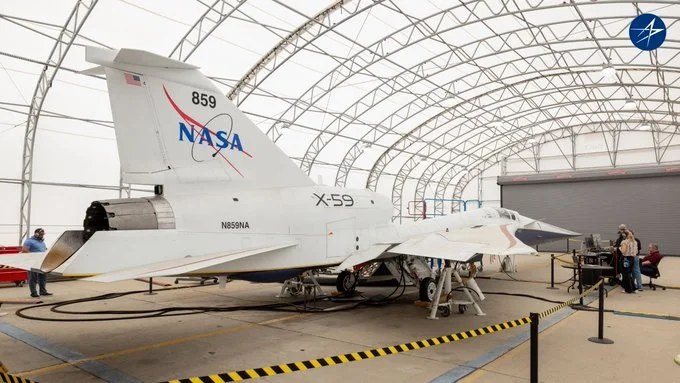
NASA’s X-59 Quietly Inches Closer to Supersonic Flight: Ground Tests Simulate Takeoff
NASA's ambitious X-59 Quiet Supersonic Technology (QueSST) aircraft has achieved a significant milestone, inching closer to its highly anticipated first flight. Instead of soaring through the sky, the X-59 took to the 'air' in a simulated environment, undergoing rigorous ground tests to ensure its systems are ready for supersonic travel.
The X-59, developed by Lockheed Martin Skunk Works, is designed to fly faster than the speed of sound without creating the disruptive sonic booms that plagued earlier supersonic aircraft like the Concorde. The goal? To revolutionize air travel by enabling commercial supersonic flights over land, a feat currently prohibited due to noise concerns.

During these "aluminum bird" tests, engineers turned on the majority of the X-59's systems, while keeping its General Electric F-414 engine off. The flight computer controlled the aircraft's control surfaces, responding to simulated changes in altitude, speed, and temperature. As explained by Yohan Lin, the X-59’s lead avionics engineer at NASA’s Armstrong Flight Research Center, the purpose was to observe how the aircraft would compensate for system failures and whether the simulated pilot could recover.
"The idea behind these tests is to command the airplane’s subsystems and flight computer to function as if it is flying," Lin stated. The simulations weren't just simple maneuvers; the team injected failures into the system to assess the aircraft's resilience.
The X-59 itself is a fascinating blend of existing aircraft components. It incorporates parts from a T-38 Talon, an F-117, an F-16, and even undisclosed U2 components in its propulsion system. This resourceful approach allowed the team to focus on the unique design needed to minimize sonic booms.
The aircraft's unique design includes a long, slender airframe and canards to reduce the noise generated when breaking the sound barrier. With a projected maximum speed of Mach 1.5 (990 mph) and a cruising altitude of 55,000 feet, the X-59 aims to demonstrate that quiet supersonic flight is possible.

The successful completion of these aluminum bird tests paves the way for the next phase: taxi tests on the runway at Lockheed Martin's Skunk Works facility in Palmdale, California. These taxi tests will further validate the aircraft's systems before the eagerly awaited first flight, scheduled for later this year. A modified F-15 will chase the X-59 in the sky, to record noise levels. Ground sensors will also take measurements.
NASA's QueSST program aims to provide the data and knowledge needed to revolutionize air travel. Whether the aviation industry and regulators embrace these findings remains to be seen. If successful, however, the X-59 could herald a new era of faster-than-sound travel, bringing back the excitement of the Concorde while addressing its limitations.
What do you think about the potential return of supersonic air travel? Share your thoughts in the comments below.